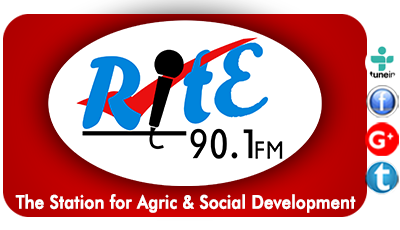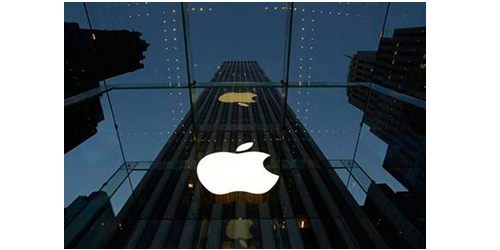Microsoft nabs a Web win, in a tiff over touchscreens and mice

Responding to pressure from programmers, Google has warmed up to a Microsoft technology to let mice and touchscreens get along on the Web — a technology Apple rejected.
A decade ago, Microsoft was the laughingstock of the Web: its browser was old, insecure and slow, and the company didn’t even bother with a browser group trying to advance what the Web could do.
My, how things have changed.
Microsoft on Wednesday scored a victory in the Web world: Google reversed its 2014 decision against against a Web standard called Pointer Events that Microsoft created and championed.
What changed Google’s mind? Support from the very Web developers who’d shunned Microsoft in the past.
“Thanks for all the feedback, everyone. We’ve heard it loud and clear and are working on a plan to hopefully allow us to ship Pointer Events in Chrome,” Google Chrome team member Rick Byers said in a note on the browser’s issue tracker.
The technology makes it easier to handle touchscreen laptops or tablets with a mouse plugged in, and it accommodates styluses, too, for devices like Samsung’s Galaxy Note.
The debate involves some technical details. Microsoft offered up a single interface that lets programmers handle both touchscreens and mice instead of separate interfaces for each — an appropriate choice since Windows works on smartphones, laptops and touchscreen PCs that can convert into tablets. Apple, whose iPhone and iPad led the touchscreen revolution but whose Macs still don’t have that feature, preferred separate interfaces for each. Firefox maker Mozilla favored Microsoft’s approach, but Google tipped toward Apple’s position.
But broader issues transcend the arcana of the underlying technology. The Web remains important as a universal computing platform, and now Microsoft is regaining some of the credibility and importance it had in the earliest days of the browser wars with Netscape in the 1990s. Microsoft must be happy when others follow its lead: it needs every bit of influence it can get with Google and Apple stealing away so much of the attention, customers and spending in the computing industry.
Google’s change of heart reflects the shifting balance of power on the Web. In 2007, Apple’s influence in the browser world soared when it introduced the iPhone and gave a starring role to its mobile-optimized Safari browser. Now iPhone programming attention has shifted to native apps for the iOS operating system, and Microsoft is the one taking the browser platform so seriously.
The Web generally doesn’t advance as fast as operating systems like Google’s Android or Apple’s iOS, in part because it can take a long time for browser makers and developers to settle down on the best way to add new abilities to the Web. But when a particular standard does catch on, it reinforces the Web’s so-far unmatched reach: every operating system has a Web browser.
That consensus-building process for the Web also can keep even powerful players from throwing their weight around. Google had hoped to speed up Web-based programs with a language called Dart, but Mozilla, Apple and Microsoft preferred to channel their energies into JavaScript. On Wednesday,Google threw in the towel with Dart, announcing that its future will only be as a behind-the-scenes programming language that’s converted to JavaScript before being added to websites.
Microsoft browser, rejuvenated

Microsoft’s Internet Explorer browser, dogged with a bad reputation, will soon be demoted to secondary role when the company releases Windows 10 as a free upgrade this summer. Windows 10’s primary browser, code-named Project Spartan, is based off core parts of IE but is stripped of lots of old code dating to the early days of IE’s history.
Microsoft has been working for years to rebuild its browser reputation. IE9, IE10 and the current IE11 have steadily added support for important new features on the Web like built-in video, accelerated 3D graphics, advanced typography and formatting, and faster JavaScript performance to improve interactive websites like Google Docs and Facebook. But it hasn’t yet reversed usage-share losses to Chrome, according to measurements by analytics companies like StatCounter.
Spartan and the EdgeHTML engine at its core gives Microsoft “a clean slate” to make it easier to support new Web standards. “Swathes of IE legacy were deleted from the new engine,” said Microsoft browser team member Jacob Rossi in an Smashing Magazine article about the change, and more than 3,000 problems were fixed where Web programmers had to worry about IE behaving differently from other browsers.
Microsoft this week announced it’s putting the EdgeHTML engine exclusively at the heart of Project Spartan, a move that demotes IE11 to a role of supporting only legacy websites that can’t get along with the modern Web. Another potentially big change: Microsoft is opening up to more outside involvement, for example by accepting Adobe Systems’ software for bringing more publishing polish to Spartan.
Microsoft hasn’t yet announced a final product name for Project Spartan.
Tipping the balance

Microsoft’s Pointer Events victory didn’t happen without a lot of work. Notably, Microsoft programmers themselves contributed software to Mozilla’s Firefox and Google’s Chrome that supports the feature.
But it was the developers who tipped the balance for Google. A total of 1,088 people flagged the issue as one to watch in Google’s issue tracker, and dozens wrote comments in support of Pointer Events. There’s still some wiggle room in Google’s commitment. Byers announced an intent to implement Pointer Events for Chrome, but the intent-to-ship hurdle will have to be cleared later.
Apple rejected Pointer Events as “technically unsound” in 2012. Google still has technical concerns, too, chiefly that its constant monitoring for events drains batteries too fast. Google plans to work on a fix for this issue, but Byers warned that a fix likely would require programmers to rewrite website code that uses Pointer Events.
“I’m optimistic some solution can be reached to enable us to support Pointer Events without committing to this performance constraint,” Byers said in a mailing list message.
Apple’s rejection of Pointer Events drew some criticism, for example from the jQuery project that’s widely used to power interactive websites and from Peter-Paul Koch, who has worked for years helping programmers grapple with browser differences. He urged Web developers to pressure Google to support Pointer Events. With Microsoft, Mozilla and Google on board, Apple would have to follow suit, he argued.
Apple didn’t immediately respond to a request for comment.
One person doubtless pleased with Google’s change will be Dominique Hazaël-Massieux, who leads efforts at the World Wide Web Consortium to create new Web standards. Describing Pointer Events in an earlier interview, he said, “We think it’s the right technology for the Web.”
Source: CNET





